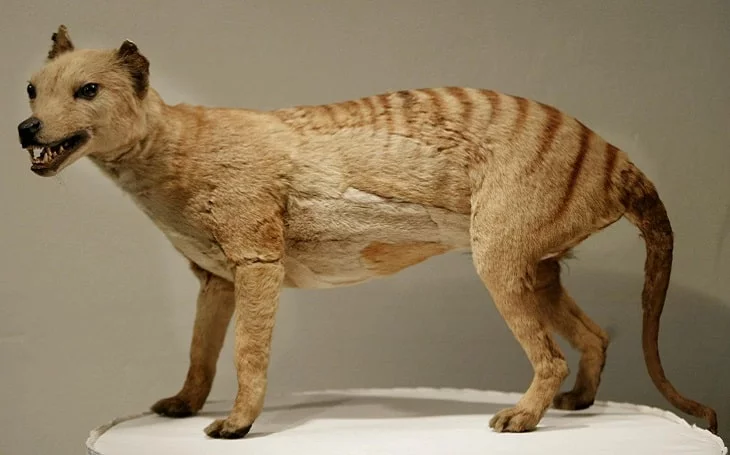Thylacine Dog Breed Information
The Thylacine is an extinct dog-like carnivorous marsupial that lived in American and Australia till the mid 20th century. It was a medium-to-large-sized that was native to New Guinea, Tasmania, and the Australian Mainland.
The Thylacine was a large-sized carnivorous mammal with a big head, short legs, and a stiff tail. Also, their ears were short and erect with their coat being dense yet short and soft.
Origin & History
The origin of the Thylacine dates back to more than 4 million years ago. It was spread and lived all over the continent of Australia, extending to New Guinea in the north and Tasmania in the south.
In Tasmania, the breed was well known in midland regions from the north and east coast but wasn’t popular in the south-west region.
How Did the Thylacine Become Extinct?
Thylacine ceased to exist due to its competition to Dingo. Similarly, their population faced a major decline because of the hunting pressure by the Australians.
Thylacine became extinct from the Australian mainland not less than 2000 years ago. Meanwhile, the breed survived in Tasmania till the late 20th century.

PC: National Museum of Australia
As dogs got introduced in the Tasmanian lands, they began disappearing. Along with that, it is also believed that they got extinct because of the human persecution by the Tasmanian natives. The main reason behind the persecution was that the people considered these creatures as pests.
The last known Thylacine named Benjamin passed away on September 7, 1936, just two months after the breed was declared as protected species by the Tasmanian government. It happened because of the carelessness of the Beaumaris Zoo, where Benjamin was kept.
On a cold night, the officials mistakenly locked the innocent creature out of its cage. Thus, it couldn’t survive the cold temperature and died.
Temperament, Behavior, & Personality
The Thylacines were very similar in temperament to any other wild animals found in the Australian and Tasmanian region. They weren’t much aggressive but wouldn’t back down from protecting themselves if sensed fear. They were calm and shy beings that would rarely show up in any human residence.
The Thylacines preferred being in packs like, hyenas and wolfs. Similarly, they would often fight for becoming the alpha of their gang.
Was Thylacine Good With Children?
The Thylacines were never domestic animals that were kept and reared by humans. So, they didn’t have much experience with human interaction. Hence, it was never a good idea to think that these marsupials would be suitable for your children.
Interesting Facts
- The Thylacine was also known as Tasmanian Tiger or Tasmanian Wolf because of its striped lower back.
- They would sometime hop on to their two legs, just like Kangaroos.
- The existence of the Thylacine is depicted in ancient rock art in Northern Australia.
- The Tasmanian Coat of Arms features two Thylacines at each side.
- Although many believe that the Thylacines are a species of dogs, they aren’t. There are marsupials having characteristics of wolfs and tigers.
- Male Thylacines had unique and scrotal pouch among the Australian marsupials. The pouch served as a protective gear for their external organs.
- They could open their mouth up to 120 degrees.

Colors
The Thylacine was found in the following colors:
- Grey
- Yellowish-Brown
- Sandy
Size
The Thylacine used to stand at a height of 39 to 51 inches (100 to 130 cm) whereas their ideal weight ranged somewhere between 33-66 pounds (15 to 30 kg).
Puppies
On average, a mother Thylacine gave birth to 1-4 puppies at a time.
Similar Breeds
- Canidae
- Numbat
Check out Doglime for more information on other extinct dog breeds.
Tags










